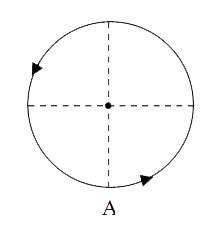In which of the following case the total number of decays will be maximum in a time interval of t=0 to t=4 hr. The first term represents the number of nuclei at time t=0 and the second represents the half life of the radionuclide:
N0,4hr
2N0,3hr
3N0,2hr
4N0,1hr
The correct Answer is:D
Step by step video, text & image solution for In which of the following case the total number of decays will be maximum in a time interval of t=0 to t=4 hr. The first term represents the number of nuclei at time t=0 and the second represents the half life of the radionuclide: by Physics experts to help you in doubts & scoring excellent marks in Class 12 exams.
Similar Questions
Knowledge Check
- Question 1 - Select One
In problem43, number of atoms decayed between time interval t1 and t2 are
Aln(2)λ(R1R2)BR1e−λt2−R2e−λt2Cλ(R1−R2)DR1−R2λ) - Question 2 - Select One
The number of boys in a class are three times the number of girls. Which one of the following numbers can't represent the total number of children in the class ?
A40B42C44D48 - Question 3 - Select One
Number of nuclei of a radioactive substance at time t=0 are 2000 and 1800 at time t=2 s. number of nuclei left after t=6s is
A1442B1554C1652D1458
As radioactive substances undergo continuous decay, number of nuclei in a sample goes on decreasing. The time interval in which number of nuclei in a sample is reduced to half of its initial value is the half-life of the sample. The half-life is related to the decay constant by the relation.
T1/2=0.693λ
The average life of a sample is expressed by the relation
τ=1λ
The decay constant of a radioactive substance having half-life 2 minutes isView SolutionAs radioactive substances undergo continuous decay, number of nuclei in a sample goes on decreasing. The time interval in which number of nuclei in a sample is reduced to half of its initial value is the half-life of the sample. The half-life is related to the decay constant by the relation.
T1/2=0.693λ
The average life of a sample is expressed by the relation
τ=1λ
If the half-life of a radioactive sample is 138.6 days, then mean life of the sample isView SolutionAs radioactive substances undergo continuous decay, number of nuclei in a sample goes on decreasing. The time interval in which number of nuclei in a sample is reduced to half of its initial value is the half-life of the sample. The half-life is related to the decay constant by the relation.
T1/2=0.693λ
The average life of a sample is expressed by the relation
τ=1λ
The half-life of radioactive samples can beView SolutionTwo radioactive nuclei P and Q, in a given sample decay into a stable nucleus R. At time t=0, number of P species are 4N0 and that of Q are N0. Half-life of P (for conversation to R) is 1mm whereas that of Q is 2min. Initially there are no nuclei of R present in the sample. When number of nuclei of P and Q are equal, the number of nuclei of R present in the sample would be :
View SolutionA particle is describing uniform circular motion in the anti-clockwise sense such that its time period of revolution is T. At t = 0 the particle is observed to be at A. If θ1 be the angle
between acceleration vector at t=T4 and average velocity vector in the time interval 0 to T/4 and θ2 be the angle between acceleration vector at t=T4 and the vector representing change in velocity in the time interval 0 to T/4, then :
 View Solution
View Solution

